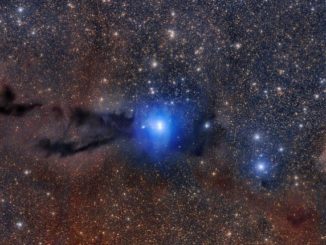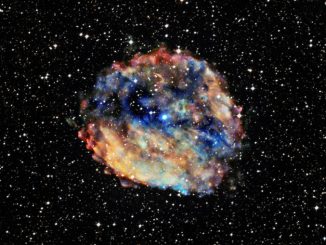
A small, borderline star about the size of Jupiter some 250 light years from Earth has been caught in the act of emitting an enormous superflare, releasing the equivalent of 80 billion tons of TNT while triggering a 10,000-fold increase in brightness.
The flare was 10 times more powerful than any known outburst from the Sun, including the Carrington event in 1859 that disrupted telegraph services around the world and caused strong, widespread auroral displays.
“The activity of low mass stars decreases as you go to lower and lower masses, and we expect the chromosphere (where flares originate) to get cooler or weaker,” said James Jackman, a doctoral student at the University of Warwick and lead author of a paper about the eruption.
“The fact that we’ve observed this incredibly low mass star, where the chromosphere should be almost at its weakest, but we have a white-light flare occurring shows that strong magnetic activity can still persist down to this level.”
The star in question is an L dwarf known as ULAS J224940.13-011236.9. L dwarfs are among the lowest mass bodies that can still be considered to be a star, falling in the transition zone between stars and brown dwarfs, which are not massive enough to support fusion.
The flare occurred on 13 August 2017 and was detected during a 146-night observing campaign using the Next Generation Transit Survey facility at the European Southern Observatory’s Paranal Observatory, with support from the Two Micron All Sky Survey and the Wide-Field Infrared Survey Explorer.
“Our twelve NGTS telescopes are normally used to search for planets around bright stars, so it is exciting to find that we can also use them to find giant explosions on tiny, faint stars,” said Peter Wheatley, Jackman’s Ph.D. advisor. “It is particularly pleasing that detecting these flares may help us to understand the origin of life on planets.”
That’s because small, cool stars tend to emit mostly infrared radiation. But flares include high-energy ultraviolet emissions that might serve to kick-start biological activity.
“It is amazing that such a puny star can produce such a powerful explosion,” Wheatley said. “This discovery is going to force us to think again about how small stars can store energy in magnetic fields. We are now searching giant flares from other tiny stars and push the limits on our understanding of stellar activity.”



